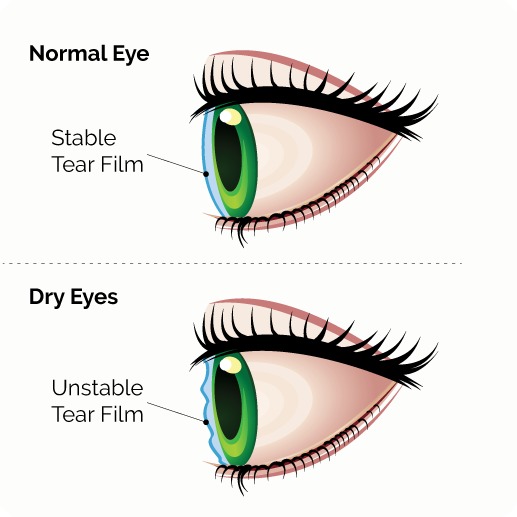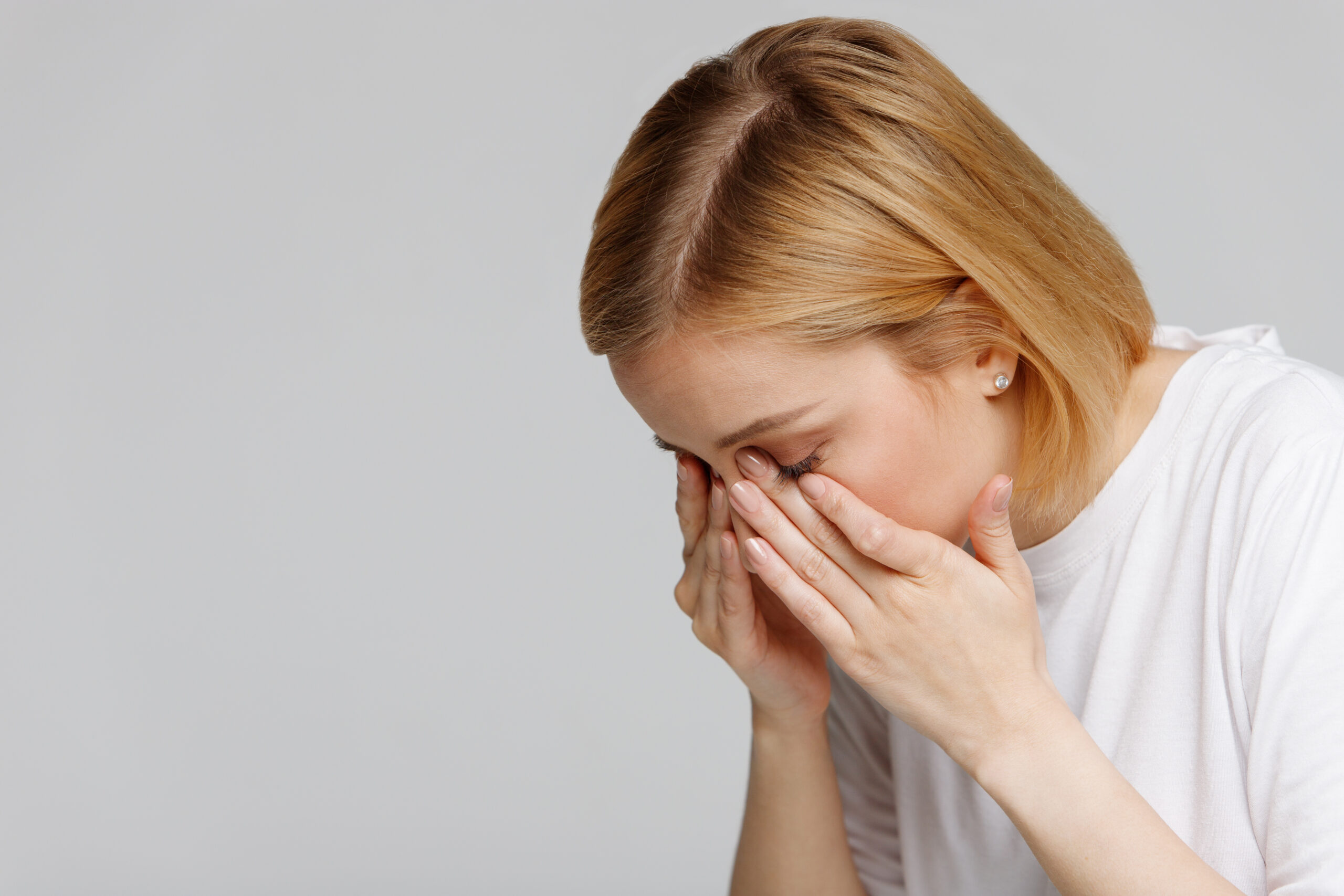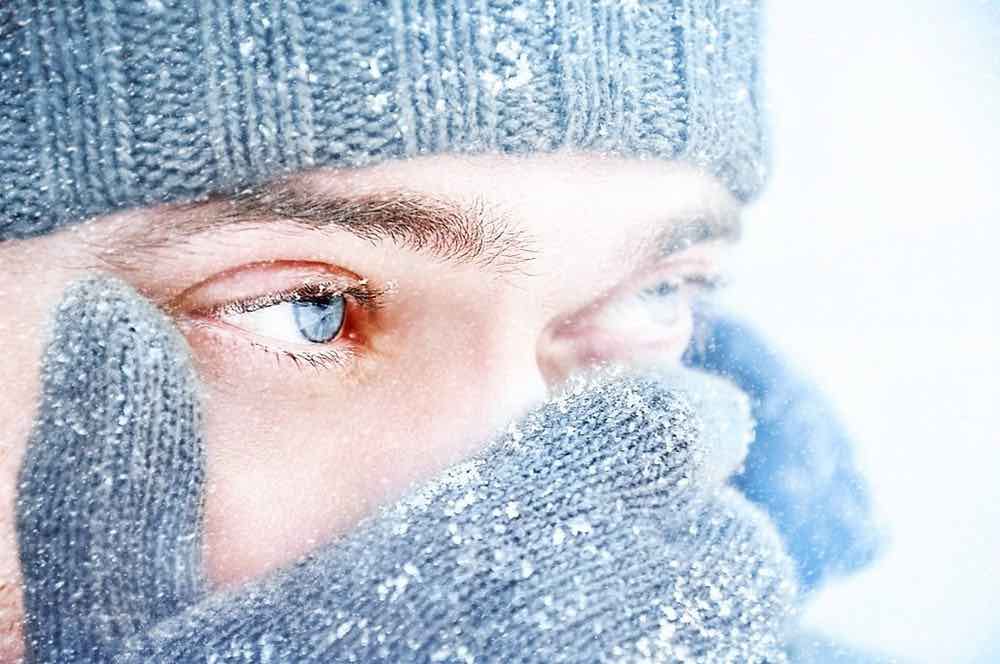What is Dry Eye?
The name “dry eye” can be a little confusing since one of the most common symptoms is excessive watering! When you do not produce enough or the right type of tears to keep your eyes healthy you may experience dry eyes.
Diagnosing Dry Eye?
Hormones, medications, weather conditions and even device screen time are all factors that affect dry eyes. Some people do not produce enough tears to keep the eye wet and comfortable. Usual symptoms can include the following:
- Stinging, burning & scratchiness
- Buildup of mucus in or around your eyes
- Excess irritation from smoke & wind
- Problems with contact lenses
- Increased tearing

Surprisingly, watering eyes may be a symptom of dry eyes. Even though the eye is basically dry, overflow tearing can occur, masking the dryness which caused them in the first place.
We understand that through precise diagnosis we can administer appropriate care to our patients. That’s why we use the TearLab® Osmolarity System, to determine the exact quality and salt content of tears. The data collected from this equipment is helpful when it comes to treating dry eye disease. This allows our doctors to recommend proper treatment while giving our patients a better understanding of their vision.
TearLab® Osmolarity System
With the TearLab® System, our doctors use a small device to collect tear fluid from the eye. Tests take no more than thirty seconds to complete with no discomfort to the patient. Doctors simply place the test card near the corner of their eye. Once the tear fluid gets collected, they place the device onto the TearLab® Osmolarity System reader. From there the osmolarity number gives them an accurate view of the severity of dry eye disease – the higher the number, the more progressed the disease. Our doctors analyze the tear quality in both eyes giving them a complete picture of your specific condition.

Treatments for Dry Eye
The osmolarity number provided by the TearLab® system indicates the progression of dry eye disease. Serving as a guideline for the type of treatment necessary. We offer several dry eye treatments to respond to your specific case, including:
Adding Tears
- Artificial Tears – Non-prescription chemical solutions increase moisture in the eye recommended to use for mild to moderate cases of dry eye.
- Prescription Tears – Restasis® is the only prescription eye drop available. It can naturally increase tear production over time. We offer Restasis® to patients who have not had the relief they desire using artificial tears. Many of whom see results within one month of beginning this treatment.
Punctal Plugs/Conserving Tears
Blocking your tear ducts which makes your natural tears stay in your eyes longer. A punctal plug is a small, silicone device and once inserted into the opening of the tear duct prevents excess tear fluid drainage. This effectively increases moisture on the eye and preserves the tear film. This is a simple office procedure that typically requires no anesthesia and it is long-lasting but can also be modified as needed.
LipiFlow
Meibomian Gland Dysfunction (MGD) is a leading cause of dry eye and it occurs when the glands in your eyelids become blocked or damaged. With MGD your body can not produce healthy tears leaving your eyes irritable. LipiFlow® is a new treatment option that stimulates and massages the Meibomian glands. The procedure only takes about 15 minutes and provides stable comfort that can last up to 12 months.
Environmental Modifications
We encourage our patients to pay close attention to their surroundings avoiding any factors known to cause irritation such as-
- Environmental conditions-Hot or dry climates, air pollution, or central heating and air conditioning.
- Cosmetic products, air fresheners, scented lotions and soaps.
- Dietary Changes -Natural remedies may reduce the symptoms associated with dry eye disease. Studies have shown that a diet high in omega-3 fatty acids can reduce the prevalence of dry eye. We recommend patients begin a regimen that includes flaxseed or fish oil supplements. Consuming foods high in these acids, such as certain nuts, salmon, and tuna.
Contact SightMD today to schedule an appointment with one of our doctors to discuss your vision health at one of our convenient locations!

Oculoplastic Surgery to Fix Tear Duct and Excessive Tearing Issues
Addressing Tear Duct and Excessive Tearing Issues with Oculoplastic Surgery Among the components of the eye, the tear ducts…

Treating (and Preventing) Dry Eyes in Winter
It’s not unusual to notice that your eyes are drier in the winter. Dry eyes are most likely to…

Are Medications Causing Dry Eye?
Dry eye is a very common problem. It affects women more than men and becomes more prevalent as people…